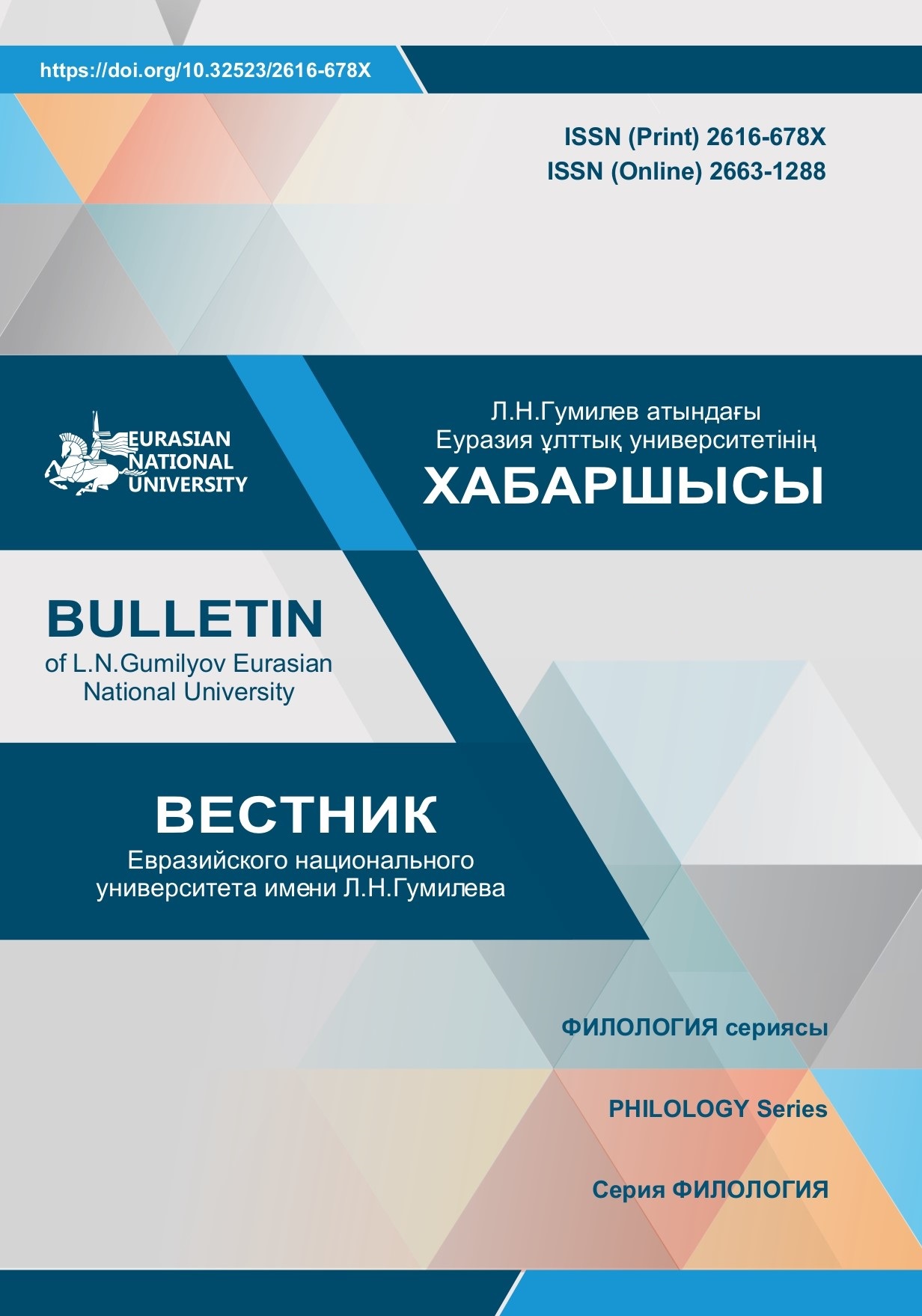Syntagma – a Unit Combining Language and Cognitive Theory
Views: 741 / PDF downloads: 122
DOI:
https://doi.org/10.32523/2616-678X-2019-129-4-141-150Keywords:
nominal words, logical concept, cognitive semantics, grammatical connection, communicative semantics, semantic unit, unit of speech, stereotype, normative, occasionalAbstract
The article firmly states that a syntagmatic structure is formed due to the connection
of words in speech. It is confirmed that the basis of the syntagmatic structure is laid down by nominal
words, their lexical meaning, cognitive semantics and their ways of grammatical connection. Syntagma
is distinguished by the fact that it is the same phenomenon that forms connections with the help of
grammatical devices and forms of communicative semantics. Due to this property, syntagma is perceived
as a unit of speech and a semantic unit. Therefore, syntagma is considered a unit that unites language
and understanding. The article also analyzes the logical essence, cognitive (cognitive) semantics and
functions of lexical meaning in the syntagma. The article finds out that they are fundamental tools for determining stereotypes of syntagmatic structure. Evidence is given that words that have natural and social
characteristics are combined. It turns out that syntagma of words is formed from combinations of words
of natural coloring, revealing the meaning of one concept, while at the same time, from combinations of
words that have a social peculiarity, a syntagma of words with different meanings is formed. They are
known as regulatory syntagms. In addition, the article points to expressive-emotional meaningful words
that also form a syntagmatic structure. They, in turn, belong to occasional syntagms.
At the same time, the article identifies similarities and differences between speech and language and their
important role in linguistics







